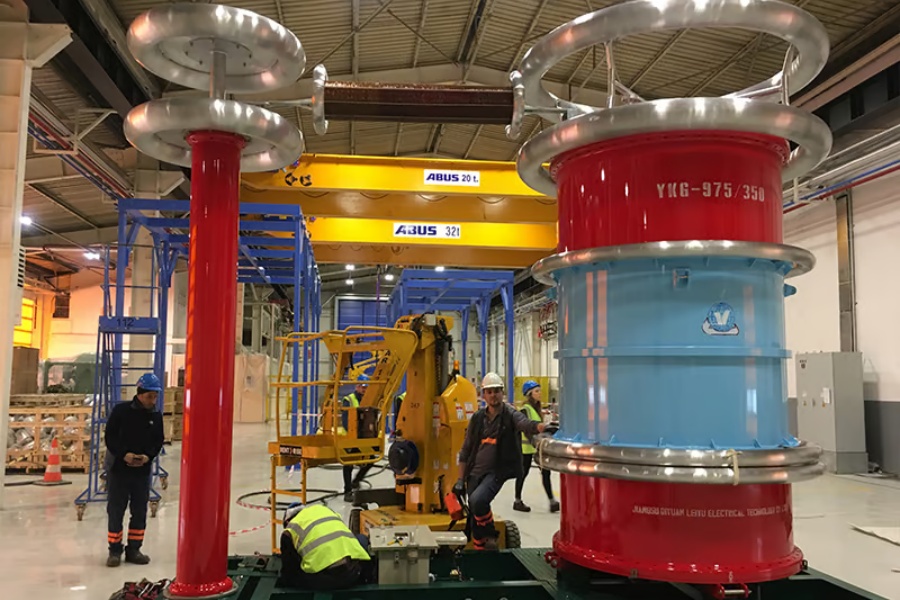Introduction
Electrical systems are prone to developing faults. These faults can be caused by several factors, including aging, environmental and operational conditions, and poor maintenance practices. Power frequency tests are a critical aspect of electrical system maintenance. This article provides a comprehensive guide to power frequency tests and their benefits.
What is a power frequency test??
A power frequency test is a type of electrical test that measures the ability of an electrical system to withstand voltage stress, such as the natural frequency of the alternating current (AC) power grid. It involves applying a high voltage to the electrical system under test for a specific period, typically one minute, and monitoring the system's response to the voltage. This test helps in detecting any potential faults in the electrical system and determines the insulation quality of the electrical equipment.
Why is a Power Frequency Test Important?
A power frequency test helps in identifying potential faults and weak points in an electrical system. It also helps in determining the insulation level of electrical equipment, which is critical in ensuring the safety of electrical personnel. A successful power frequency test guarantees the reliability and stability of the electrical system, preventing unplanned downtime and reducing maintenance costs.
When Should You Conduct a Power Frequency Test?
A power frequency test should be conducted on an electrical system when it is first installed and regularly as part of the preventive maintenance schedule. It should also be conducted after any significant repairs or modifications to the electrical system. A power frequency test can also be conducted to determine the electrical system's readiness for high voltage applications, such as lightning strikes.
How is a Power Frequency Test Conducted?
A power frequency test involves applying a high voltage to the electrical system under controlled conditions using a test transformer or resonant system. The test voltage level depends on the electrical system's voltage rating and is usually 80% of the system's rated voltage for one minute. Several parameters are monitored during the test, including current, voltage, and phase angle. The measured values are then compared to the acceptable values specified by the manufacturer, industry standards, or international regulations.
What are the Benefits of a Power Frequency Test?
The primary benefit of a power frequency test is identifying potential faults in an electrical system before they cause unplanned downtime or electrical accidents. This test can also help in reducing the frequency of expensive repairs and replacements and optimizing the electrical system's performance. Additionally, a successful power frequency test can help in complying with regulatory requirements and industry standards, preventing legal liabilities.
What are the Risks of a Power Frequency Test?
A power frequency test involves working with high voltages, which presents a significant safety risk to electrical personnel. The voltage levels used in power frequency tests are potentially lethal and should only be handled by trained and certified personnel. There is also a risk of damaging electrical equipment during the test, especially if the test is not conducted correctly.
How Do You Prepare for a Power Frequency Test?
Preparing for a power frequency test involves several steps, including obtaining test equipment, ensuring that the electrical system is de-energized, removing any grounded equipment, and ensuring that the test is conducted under controlled conditions. It is essential to consult the electrical equipment manufacturer or a qualified electrical engineer before conducting the test.
How Do You Interpret the Results of a Power Frequency Test?
The results of a power frequency test are typically compared to the acceptable values specified by the electrical equipment manufacturer, industry standards, or international regulations. Any deviation from the acceptable values indicates a potential fault in the electrical system or equipment. The corrective action to be taken depends on the nature and severity of the fault.
Conclusion
Power frequency tests are a critical aspect of electrical system maintenance. They help to identify potential faults in an electrical system, determine the insulation quality of electrical equipment, and guarantee the reliability and stability of the electrical system. However, conducting a power frequency test presents significant safety risks to electrical personnel, and it should only be handled by trained and certified personnel.

